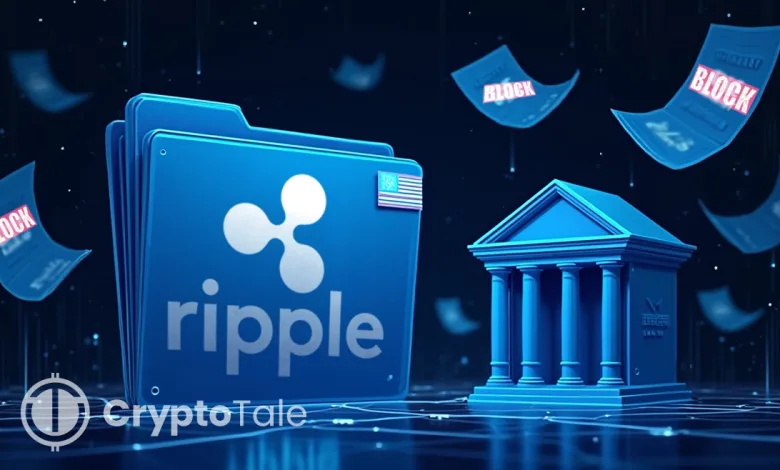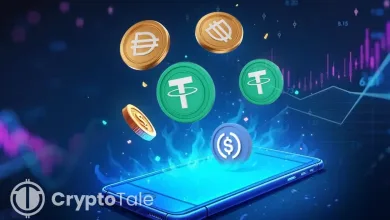Ripple Battles Against 42 Banks to Reshape Global Finance

- Ripple’s bank license application sparks fierce resistance from 42 major U.S. banking giants.
- XRP and RLUSD threaten legacy banking with instant, low-cost global payments.
- Ripple’s tech stack aims to replace traditional systems with a self-run ecosystem.
Ripple’s banking license application has sparked major resistance, as 42 U.S. banks, under the Bank Policy Institute (BPI), formally opposed the move. Ripple applied for a U.S. national bank charter and a Federal Reserve master account in July 2025. The outcome of this battle could reshape global finance and position Ripple as a dominant financial infrastructure provider.
Ripple aims to transition from a fintech firm to a fully regulated U.S. bank with direct access to Fedwire Funds Service, granting it full banking status. These developments place Ripple on a collision course with traditional banking systems that rely on outdated infrastructure.
Ripple’s application triggered immediate backlash from BPI, representing 42 powerful banks including JPMorgan, Citi, Bank of America, and Goldman Sachs. The BPI raised concerns about risk management and fiduciary stability. However, this clash signals broader disruption, as Ripple’s model threatens existing fee-based banking structures.
XRP Challenges Legacy Payment Networks
Ripple’s integration of XRP for global liquidity offers a clear alternative to SWIFT, wire transfers, and Nostro/Vostro accounts. XRP enables near-instant cross-border transactions at a fraction of traditional costs. This undermines the role of middlemen and exposes inefficiencies in legacy banking systems.
The banking sector has long depended on payment delays, intermediary banks, and high transfer fees. Ripple’s strategy using XRP removes these friction points, allowing instant settlement across borders. With XRP, Ripple eliminates the need for complex multi-bank payment routes.
Ripple has already established On-Demand Liquidity (ODL) in over 50 countries using XRP as the transaction medium. This network bypasses traditional systems and accelerates financial operations. XRP serves as a foundation for Ripple’s ambition to modernize global money movement.
RLUSD Pushes Ripple Into Stablecoin Territory
Ripple uses RLUSD, a U.S. dollar-backed stablecoin, for real-time settlement across its financial network. The firm’s license request would allow direct issuance of RLUSD under a regulated U.S. banking framework. This would create a new payment rail that competes directly with commercial banks.
This development threatens existing banks that rely on slower, batch-based systems for clearing and settlement. RLUSD, when paired with XRP, forms a closed-loop solution that reduces reliance on external networks. Ripple’s control over both layers gives it a significant edge in financial innovation.
Ripple’s Global Position Challenges U.S. Banks
Ripple has received licenses in jurisdictions such as the United States, Singapore, and Dubai, which increases its regulatory status. It is also a reputable service provider overseas, which gives it momentum as banks in the U.S. marshal opinions against it.
Ripple aims to establish a foothold within the established banking industry. Nevertheless, this initiative poses a direct threat to established institutions that enjoy the status quo of regulation. The reaction of the BPI reflects the extent of disruption that Ripple poses to legacy systems. It positions itself not just as an alternative, but as a replacement for core banking infrastructure.
Related: Ripple Patent Unlocks Institutional-Grade Consensus for Global Payments
Ripple and XRP Signal a System Shift
Ripple’s approach compels us to reconsider how money is transferred across borders and within internal systems. XRP offers immediate settlement and liquidity, and RLUSD stability through fiat. The combination of them creates the basis of a new financial infrastructure.
XRP still underlines the global ambitions of Ripple as it struggles to fight for a U.S. bank permission. The decision could set a global precedent for the future of digital finance. Regardless of whether or not it is approved, Ripple is already a key player in transforming global finance.




